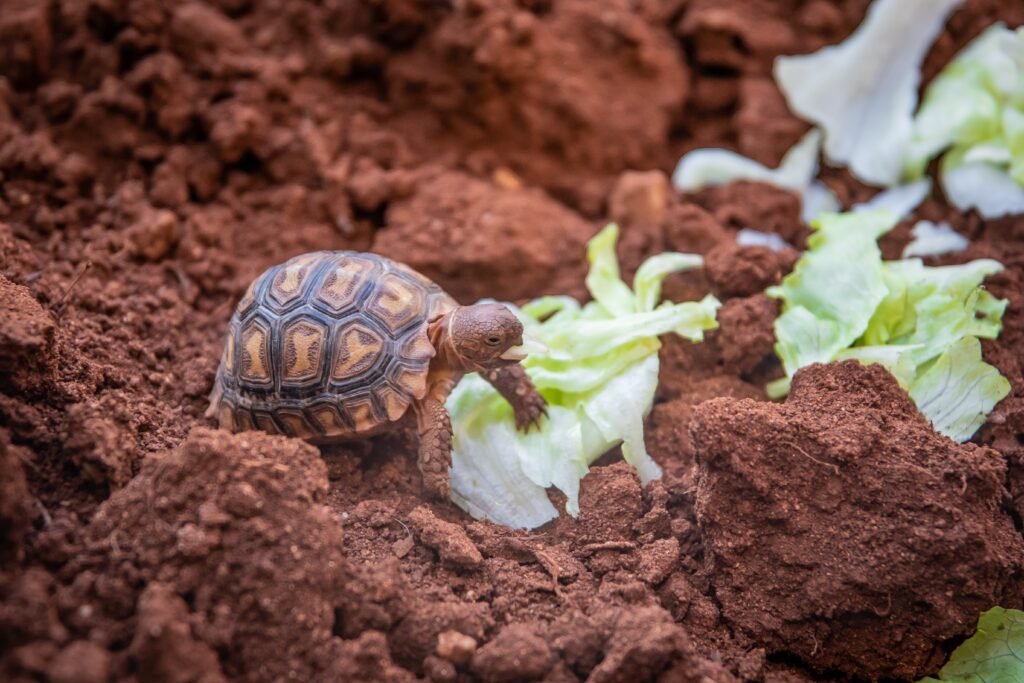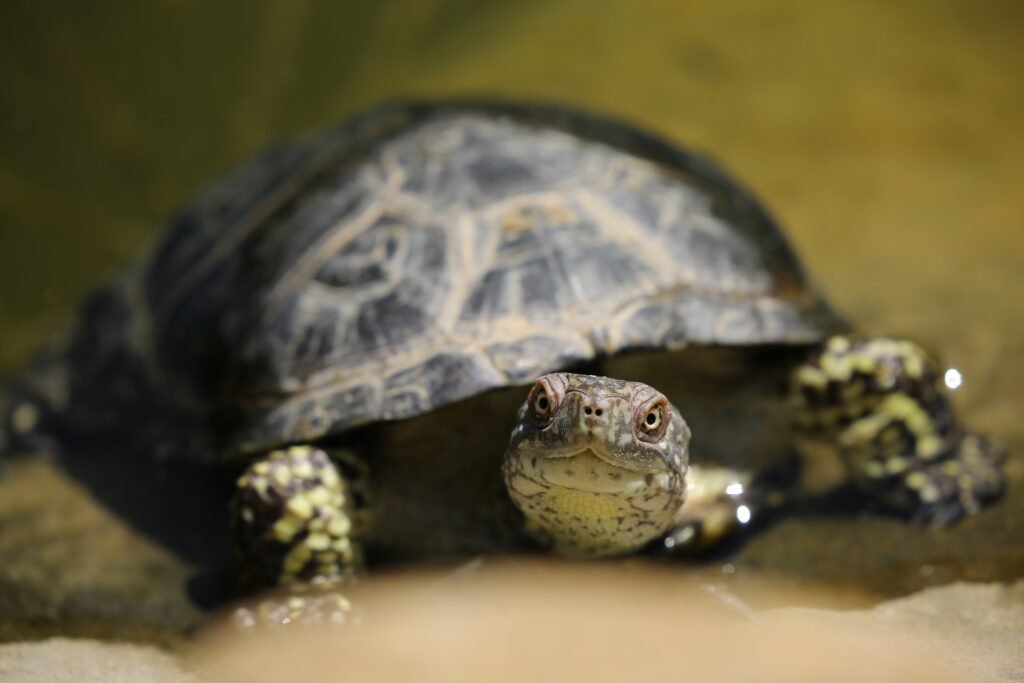How to Care for A pet Turtle?
Turtles are great pets whose charisma, personality, and sheer intelligence are enough to floor you. However, they require extra care and maintenance, which includes setting up a perfect habitat with clean water where a specific temperature is maintained using a basking lamp. It also includes providing them plant and protein-based healthy diet, plus taking them to the vet when you notice something concerning. Let us learn in detail.
Expert Tips to Care for pet Turtle:

Setting up an appropriate habitat to care for a pet turtle
Tank size:
Pick up a tank size that is five times the size of your turtle. First, measure the length and width of your turtle. Multiply the length and breath reading by five to get the minimum dimensions of your turtle’s habitat.
It is better to consider the size of the full-grown turtle while choosing the tank size. However, if you have a baby turtle that is going to get bigger, you can start with a small tank for its current size and then move it to a larger tank as it grows.
Add water:
Always consider adding non-chlorinated clean and fresh water at 77 to 88 degrees Fahrenheit (25-27°C). Fill the tank with water depending on the type of turtle you have. Aquatic turtles like map turtles or red-eared sliders require 75% of the tank filled with water, while semi-aquatic turtles like pond or mud turtles require 50% of the tank to be water.
Keep a thermometer in the water:
So you can monitor the tank water’s temperature to ensure it’s not too cold or hot and make changes accordingly.
Place a floating rock and a piece of driftwood in the water:
As the tank is mainly filled with water, try putting a floating basking rock. Also, consider placing a piece of driftwood in the tank to provide your turtle with a place to hide.
Basking lamp:
Put the lamp high enough, so it’s at least four to six inches from the top of the turtle. When the turtle is basking, it will prevent the light from burning your pet turtle.
Purchase a biological and mechanical filter for a turtle tank:
Choose a filter that is twice the size of your turtle tank. Let me clarify. Suppose your tank size is 50 gallons. Then purchase a filter that can handle 100 gallons of water.
Pick one that provides both mechanical and biological filtration to properly care for the pet turtle habitat. The mechanical part helps clean out physical objects suspended in turtle tanks. In contrast, the biological function helps remove dangerous chemicals that can harm your pet turtle’s health.
You can easily find quality filters for your turtle tank from a pet store supply or an online retailer.
Decorate your turtle’s habitat:
Use live plants and risks to make your tank aesthetically pleasing and provide pet entertainment. Add decorations like aquatic plants, part moss, or large rocks. Some aquatic plants for turtle tanks include horn wart, java fern, or water wheat. Ensure enough space for your turtle to move freely and swim without hindrance. You can also use fine sand or fluoride to line the bottom of the turtle’s tank.
Note:
- Avoid using gravel or rocks that are smaller than the size of your turtle’s head. Otherwise, your pet may try to eat them and could choke.
- Avoid picking rocks or sand from nature. They may contain harmful bacteria that may prove lethal for your pet turtle.
- Always buy decorative materials from a pet store or an online retailer.
Where to place the tank?
Keep your tank out of direct sunlight and away from other animals, you have as pets. Make sure to place your tank somewhere so the animals can’t get them. Try choosing a spot at room temperature to protect your turtle from being too cold or hot.
Tank cleaning:
Clean the tank at least once a month. Keep your turtle in a safe place like a bucket, bowl, or carrying case while cleaning the turtle habitat.

Feed him appropriately to care for a pet turtle
- Most semi-aquatic and aquatic turtles are omnivores, which means they eat a combination of animal protein and vegetables.
- Feed young turtles daily and adult turtles every other day.
- You can give your turtle veggies like broccoli, celery, lettuce, cabbage, and kale.
- Feed your turtle earthworms, caterpillars, crickets, or mosquito fish as protein sources.
- Feed your pelleted pet food explicitly made for turtles that can be purchased from pet shops or online retailers.
- Most pets love fruits but give them fruit occasionally treats as fruits do not provide much nutritional value.
Health care tips for turtles
Keep them clean to properly care for a pet turtle:
Always wash your hands before and after touching the turtle or anything in the turtle’s tank. This will prevent passing germs to your turtle and also halt passing bacteria from your turtle to you.
Take your turtle to a Vet:
Keep an eye on your pet turtle for unusual changes like weepy eyes, softened shells, or any growing pyramid-shaped shell. An ill turtle may refuse to eat. Take them immediately to get them if you observe abnormalities in your pet.
Look into “howtothing.net” detailed pages about care for dogs, cats, hamsters, horses, and birds to get more information.

